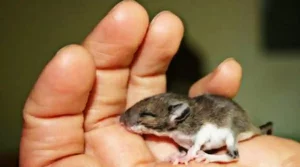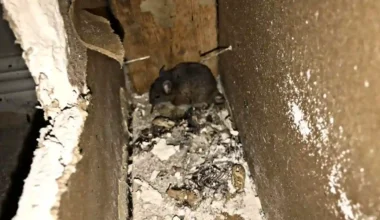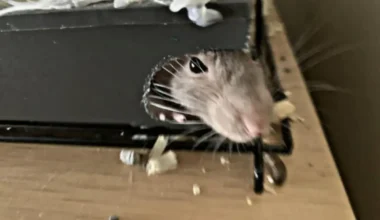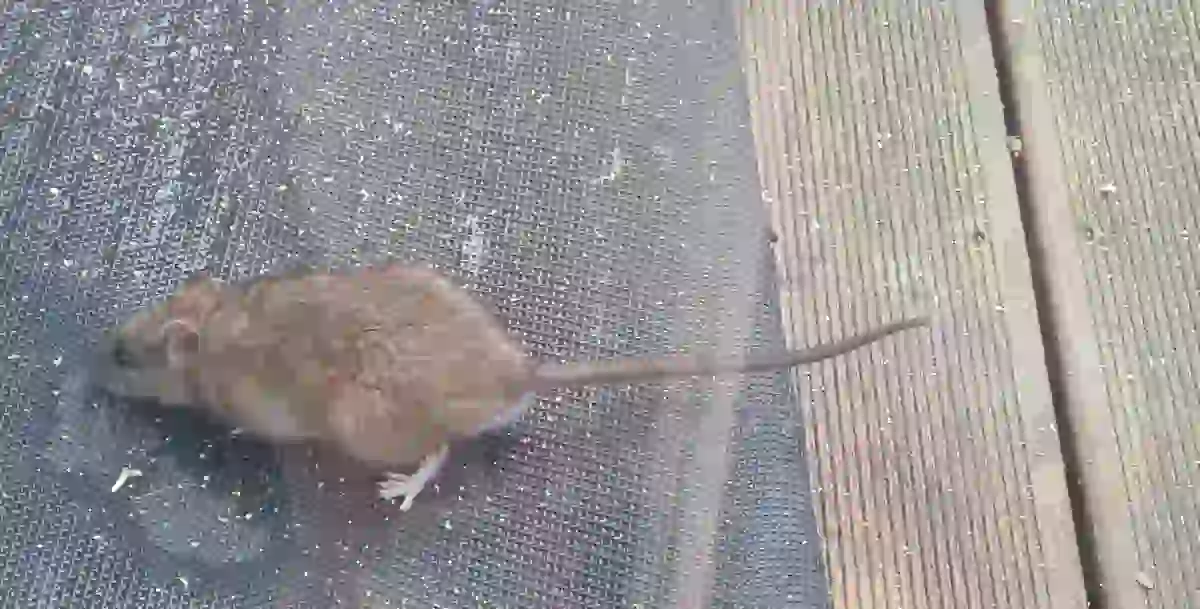What to do when you find a baby mouse in your house? A baby mouse may appear harmless but it could be a sign of an infestation in your house. That’s to say that if you found a baby mouse, adult mice are lurking around. While the pest control thing to do is to get rid of the babies and inspect for the adults and possible infestation, the humane thing to do is to raise the baby wild mouse until it has the survival skills it needs. That means you will keep and nurture it in captivity and then dispose of it.
What to do when you find a baby mouse in your house

There can be so much to do though. Just follow this guide to make the best decision:
Call a wildlife rehabilitator
We encourage treating the poor baby critter humanely. Consider calling your local wildlife rehabilitation facility to increase the baby mouse’s chance of survival after it is transferred to a wildlife expert.
Also, make sure to ask the rehabilitator what they intend to do with the mice when you call. Although they will raise them, they might attempt to feed them to other animals they are caring for. If you don’t want the baby to end up as owl food, consider raising it yourself.
Make the baby feel comfortable
Fill a box with pristine, gentle rags and cut out any extra yarns that could tangle around the mouse’s legs. Make sure to wash your hands immediately after touching a wild mouse or its poop with bare hands as they may be infected with the harmful and contagious Hantavirus. If the baby mouse makes it through the first few days, place it in a ventilated glass or plastic container to prevent it from gnawing through.
Keep the baby mouse warm
Baby mice are remarkably cold-tolerant, such that their body temperature can drop almost to freezing for hours and warm up again when their mother returns, per McMaster University. Since the mother may not return, keep the baby mouse warm at 80 to 100 degrees Fahrenheit. Use a thermometer to check the temperature. You can wrap a heating pad in a soft, clean towel and set it to the lowest setting. Place the heating pad underneath the mouse and beneath the box.
If it feels a little warm to the touch, wait a minute for it to cool in the box before pressing it against the baby mouse.
Use a bottle or bag packed with warm, cooked rice if you don’t have a heating pad. As the rice cools, keep rewarming it. Use any type of reheatable bottle, it can be a thick zip-lock freezer bag or a plastic bottle.
At around 2 and a half weeks old, a healthy mouse can regulate its body temperature as long as it is placed in a warm, indoor container.
Feed the baby
Try feeding the baby by hand if there isn’t a rehabilitation center nearby. Get a tiny feeding syringe (without the needle). You can’t feed a tiny baby mouse with an eye-dropper. Pet stores do sell tiny syringes with thin, curved spouts.
You also want to hydrate the baby mouse. Give the infant 3-4 drops of a non-flavored electrolyte drink, such as Pedialyte, and wait for an hour before feeding it a formula.
Nevertheless, feeding or providing hydration to a baby wild mouse can be dangerous as it can cause aspiration, which occurs when even a small amount of fluid enters its lungs. If you observe bubbles coming out of the mouse’s mouth while feeding, it probably has already aspirated.
Inspect the nest area for adult mice
You probably consider the mouse baby an unwelcome visitor. In this case, have the professionals take it away for proper care and to be released back into the wild when they come of age.
If you found a baby mouse in a nest without the mother, you might have scared her away or she may have gone in search of food.
When you get rid of baby mice, it signals the parents that the nest is no longer safe. If you eventually notice common mouse signs in your home, such as droppings, evidence of gnawing on food items and packaging, or squeaking and scurrying within your walls or in the sofa, you have the adults lurking around in search of the baby or food.
Search for any evidence of a nest or holes in the baseboards or walls where mice might be getting into your house. This can assist you in figuring out where the mice are coming from and any potential mouse-repelling measures that may be necessary.
Keep adult mice at bay
The most effective way to keep mice out of your home is to make it unappealing to them. Start by eliminating potential food sources. Simply keep your kitchen clean and store all food in airtight containers. Keep the outside of your home tidy by cleaning up any accumulated materials that could be used for nesting, such as cardboard boxes, old clothes, and linens. Seal any cracks or gaps in your foundation, walls, electrical outlets, and pipes to prevent entry. You can use a mixture of copper wool and caulk or foam sealant to seal other areas, as mice have difficulty chewing through these materials.
Moreover, there are numerous mouse-repellent recommendations available. Non-toxic solutions such as cotton soaked in essential (100 percent) peppermint or clove oil, common dryer sheets, and even mothballs are recommended by some homeowners. Some homeowners also set up cage traps baited with peanut butter to catch and release caught mice into the wild.
Read also: why glue-trapped rats return
What does a baby mouse look like?
A baby mouse typically has no hair and is blind. Within 2 weeks, a tiny baby mouse should develop a coat of fur and begin opening its eyes. Baby mice resemble miniature counterparts of adults at this stage. Soon after, they start exiting the nest, which is when homeowners start experiencing increased pest activities on their property.
Found a baby mouse in my house is there more?
Considering that mice typically breed in big groups and live together, you probably have more in your house if you found a baby mouse. Mice reproduce quickly. If you have had two parent mice on your property for 2 years, they are able to produce as many as 10 litters, which is 60 mice per year.
Although you may care about the baby mouse’s welfare, you need to handle it cautiously as it might spread disease and harm your household. Instead, consider releasing it outside, far from your house, or get help from a nearby wildlife rehabilitation facility.
If you notice that you have more mice, your home has a significant mouse infestation. Stop it to prevent further breeding and expensive property damage. Simply seal up any openings or cracks where mice might be getting in, get rid of any potential food sources, and place mouse traps. You could also do with humane deterrents such as ultrasonic gadgets that produce noises that make mice uncomfortable.
Read also: what could be wrong if baby mouse won’t run away
Conclusion
Consider seeking assistance from a professional pest control expert if you can’t control an identified mouse infestation on your own. They can follow the best course of action and employ more sophisticated techniques, including baits and poisons, to get rid of the mice in your house.
Ultimately, a baby mouse found in your house indicates an infestation, so make sure to prevent adult entry by sealing holes and keeping your property clean.






